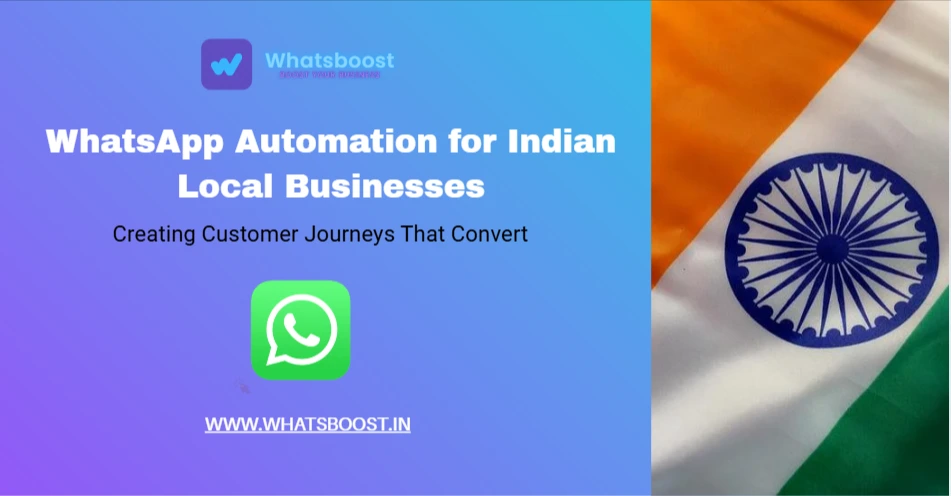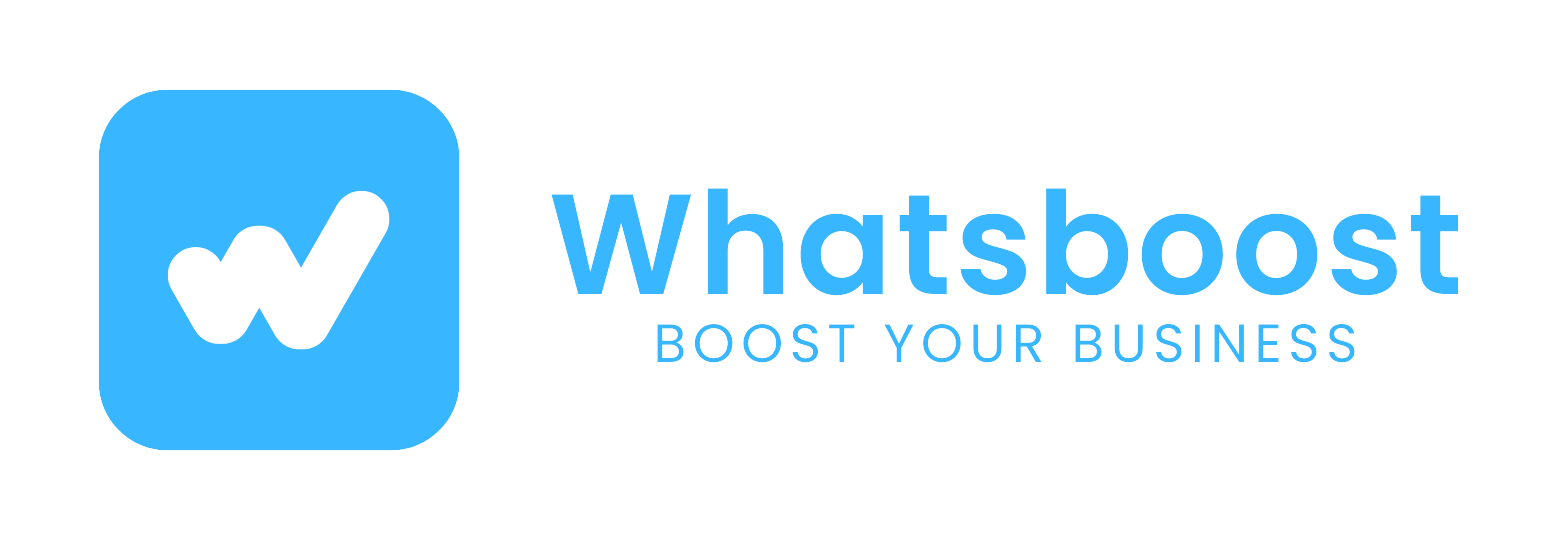
WhatsApp Automation for Indian Local Businesses: Creating Customer Journeys That Convert
Discover WhatsApp automation strategies for Indian local businesses. Learn to create effective customer journeys from first contact to repeat business with WhatsBoost.
Imagine your phone buzzing with qualified leads while you focus on serving customers. Picture a system that automatically follows up with interested prospects, books appointments, and keeps past clients coming back.
For countless local businesses across India—from neighborhood pharmacies to tuition centers—this is becoming their new reality through strategic WhatsApp automation.
Unlike impersonal bulk messaging, modern WhatsApp automation creates personalized customer pathways that feel genuinely helpful. When a potential client messages your business, they begin a carefully designed journey that understands their needs and provides timely solutions.
This approach transforms your WhatsApp number from a simple contact point into your most effective business development tool.
Building Your Customer Pathway: Three Essential Stages
Successful WhatsApp automation mirrors the natural customer relationship cycle. Each stage serves a distinct purpose in moving people from curiosity to loyalty.
Stage 1: Initial Connection and Trust Building
The first interaction sets the tone for everything that follows. Your automation should make prospects feel welcomed and understood immediately.
Key Automation Steps:
Instant Welcome Response: When someone first messages your business, they receive a prompt, friendly greeting that acknowledges their inquiry and sets clear expectations.
Information Gathering: Use quick, interactive buttons to help visitors specify their needs—whether they're seeking pricing, availability, or general information.
Value Demonstration: Share relevant examples of your work, customer testimonials, or helpful resources that establish your expertise.
Practical Example for a Coaching Center:
"Welcome to Excel Academy! Thanks for your interest in our math tutoring programs. Could you let us know which class your child is in by replying with the number? We'll then share the most relevant program details."
This approach immediately engages visitors while gathering crucial information to personalize subsequent communications.
Stage 2: Conversion Pathway
This stage focuses on guiding interested prospects toward taking action—whether that's making a purchase, booking a service, or scheduling a consultation.
Effective Conversion Tactics:
Personalized Follow-ups: If a prospect doesn't book immediately, your system can send helpful reminders with additional information that addresses common concerns.
Limited-time Incentives: Create urgency with special offers exclusively for WhatsApp contacts, encouraging them to take the next step.
Barrier Removal: Make the booking process effortless with integrated scheduling tools that show real-time availability and confirm appointments automatically.
Real-World Application for a Salon:
"Hi Priya! Not sure which facial is right for your skin type? Our skincare expert is available Thursday for a complimentary 5-minute consultation. Would you like us to reserve a slot for you?"
This message addresses potential hesitation while making the next step simple and risk-free.
Stage 3: Retention and Loyalty Development
The most profitable businesses understand that existing customers are their most valuable asset. This stage focuses on maintaining relationships and encouraging repeat business.
Retention Strategies:
Post-Service Check-ins: Automated messages following a purchase or service demonstrate your commitment to customer satisfaction.
Exclusive Offers: Reward repeat customers with special discounts or early access to new services.
Feedback Collection: Simple, automated surveys help you improve your offerings while making customers feel heard.
Sample Retention Message for a Restaurant:
"Thanks for dining with us, Raj! We hope you enjoyed your meal. As a token of our appreciation, here's 15% off your next order. Simply show this message when you visit us again."
Implementation Framework for Indian Businesses
Creating effective automation requires careful planning and execution. Follow this structured approach to ensure your system delivers results.
Initial Setup and Foundation
Begin by defining your customer pathways. Map out the typical journey someone takes from discovering your business to becoming a regular client. Identify key touchpoints where automated messages can enhance their experience rather than interrupt it.
Message Crafting and Personalization
Your automated messages should sound human and conversational. Use placeholders to insert customer names and reference previous interactions. For Indian businesses, consider incorporating local language phrases where appropriate to create a more personal connection.
Timing and Frequency Optimization
Space your messages strategically to maintain engagement without overwhelming recipients. The ideal timing varies by business type—service reminders might need to go out 24 hours in advance, while follow-up messages might work best 2-3 days after an initial inquiry.
Performance Tracking and Refinement
Monitor which messages generate the most responses and conversions. Use this data to continuously improve your automation. If certain messages aren't performing well, test different phrasing or timing to see what resonates with your audience.
Cultural Considerations for Indian Markets
Success in the Indian market requires understanding local communication preferences and business customs.
Regional Adaptation:
Consider creating message variants in local languages for customers who might be more comfortable communicating in their native tongue.
Be mindful of regional festivals and holidays when planning your messaging calendar.
Understand that communication styles vary across different regions—what works in metropolitan areas might need adjustment for smaller cities.
Building Trust:
Indian consumers value transparency and reliability. Your automation should consistently demonstrate these qualities through clear communication, honest offers, and reliable follow-through.
Measuring Success and ROI
Track these key metrics to evaluate your WhatsApp automation effectiveness:
Response Rate: Percentage of automated messages that generate replies
Conversion Rate: How many message recipients become paying customers
Retention Rate: Percentage of customers who return after their first purchase
Customer Satisfaction: Feedback scores and review ratings
Getting Started with Confidence
Begin with a single automation pathway rather than trying to automate everything at once. Choose your most common customer inquiry and build a simple, helpful sequence around it. Once you've refined that process, expand to other areas of your business.
The most successful implementations start small, learn quickly, and scale intelligently. Focus on creating genuine value at every touchpoint, and your automation will become an indispensable part of your business growth.
Ready to transform your customer communications?
Explore WhatsBoost's automation features to create personalized WhatsApp journeys that build relationships and drive growth for your Indian business.
